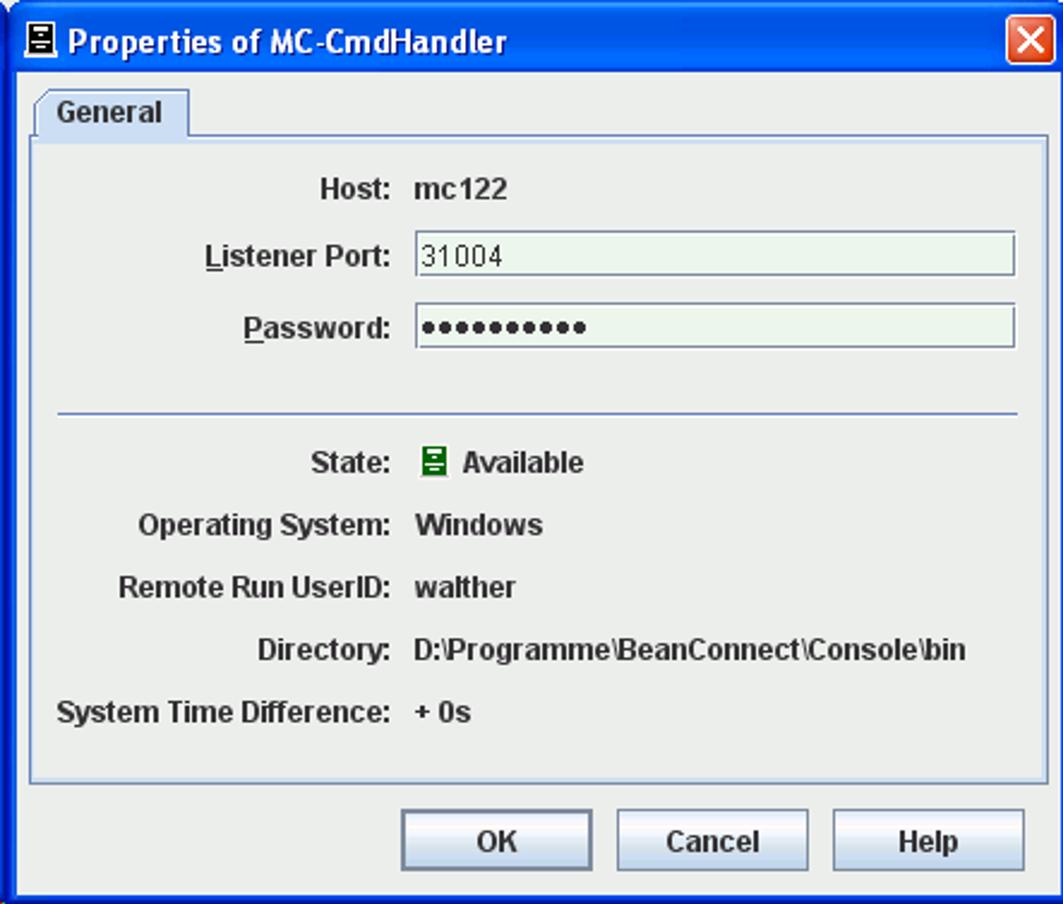To add a resource adapter, open the context menu for the Resource Adapter node in the navigation tree's proxy subtree and choose Add Resource Adapter... Alternatively, you can click the required node and then run the Add command in the resource adapter list. The proxy must not be running when it is added. You may therefore need to stop it, for example using the Stop Proxy command in the proxy's context menu.
Enter the parameters for the resource adapter in the General tab:
Figure 25: Adding a resource adapter without cluster operation
Name
Freely definable name of the resource adapter. This name is only relevant locally in the Management Console.
ID / Index
ID is the ID of the resource adapter assigned by the Management Console. This is a number between 1 and 256.
Index is the index of the resource adapter which is assigned by the Management Console. The index is only relevant in multiple resource adapter mode This property corresponds to the resourceAdapterIndex property in the resource adapter's deployment descriptor ra.xml.
Description
You can enter a freely definable description of the resource adapter here.
Host
Name or IPv4 address of the computer running the application server on which the resource adapter is deployed.
Listener Port
Number of the listener port of the resource adapter for inbound communication. This property corresponds to the inboundListenerPort property in the resource adapter's deployment descriptor ra.xml. If you enter 0 here then neither inbound communication nor availability checking are possible for this resource adapter.
Proxy URL of OLTP Outbound Communication
URL used for outbound communication in the application server. This URL is defined when the proxy is configured and cannot be changed. This property corresponds to the proxyURL property in the resource adapter's deployment descriptor ra.xml.
Transaction Logging
Specifies whether persistent transaction logs are written in the resource adapter in the case of outbound communication (FILE) or not (NONE). This property corresponds to the transactionLogging property in the resource adapter's deployment descriptor ra.xml. If transaction logging is configured then the resource adapter writes a separate log file for each transaction. The file name consists of the prefix tx. and a number.
Transaction Logging Directory
Directory in which the transaction logs are created in the resource adapter. This property corresponds to the transactionLogDir property in the resource adapter's deployment descriptor ra.xml.
MC-CmdHandler of the Resource Adapter
This allows you to define an MC-CmdHandler that is available on the resource adapter computer and that can be used to administer the resource adapter via the Management Console. To do this, proceed as follows:
Click the ... button in Select MC-CmdHandler to display an additional dialog box Properties of MC-CmdHandler in which you can enter the data for the MC-CmdHandler (listener port, password):
Figure 26: Configuring the properties of an MC-CmdHandler
If the BeanConnect-RAR archive is also located on this computer, then you can use this MC-CmdHandler to edit the entries in the resource adapter's deployment descriptor
ra.xmlor update these entries in line with the entered parameters. You can do this using the commands Edit ra.xml of BeanConnect Resource Adapter RAR or Update ra.xml of BeanConnect Resource Adapter RAR in the resource adapter's context menu, see Resource adapter configuration file .You can also use this MC-CmdHandler to modify the Log4j diagnostic settings.
You can enter the fully qualified path name of the Log4j configuration file in Log4j Configuration File Path (optional).
The Log4j configuration file is always located on the computer on which the application server runs. This does not have to be the computer on which the BeanConnect resource adapter is located since the resource adapter cannot be uploaded to the application server computer before deployment.
If you want to change the resource adapter's logging configuration then an MC-CmdHandler must be running on the computer on which the application server runs.


